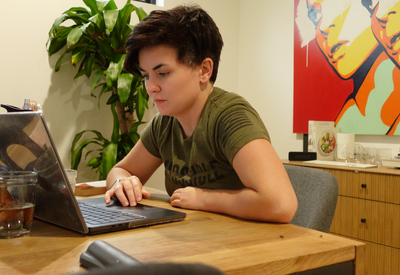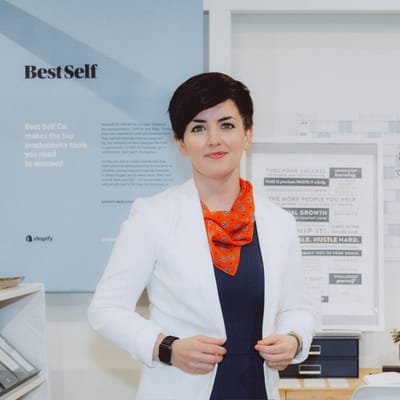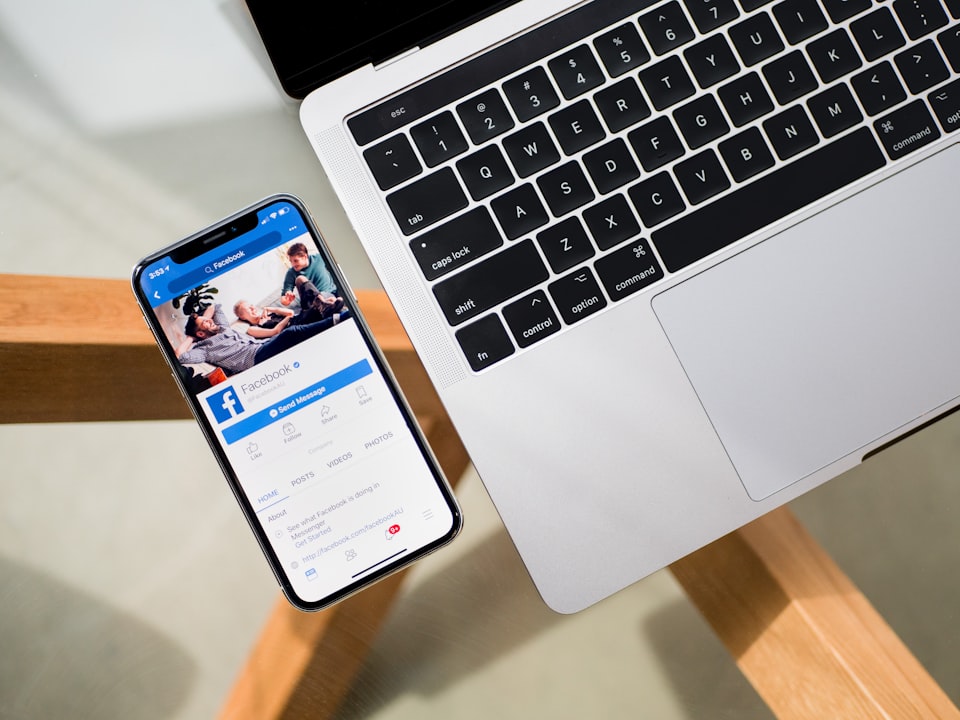
Have you ever tried to create something and it didn’t seem to work?
A book? An App? A Course? A Physical product?
You released it to the world, and it just didn’t sell. You figured it was because your idea wasn’t very good after all.
Today I’m going to share with you how to validate your idea before creating it. I’m a big fan of proving an idea before building; it’s what I did for a SaaS, with Kickstarter and now on Facebook.
Firstly, let’s get into what this post is not:
I’m not about to teach you how to run Facebook ads for your idea.
The Challenge:
In December 2015, I challenged myself to presell ten people on a Kickstarter course I wanted to create, not from email to a list, but from a Facebook post.
In less than 24 hours, here are the results:
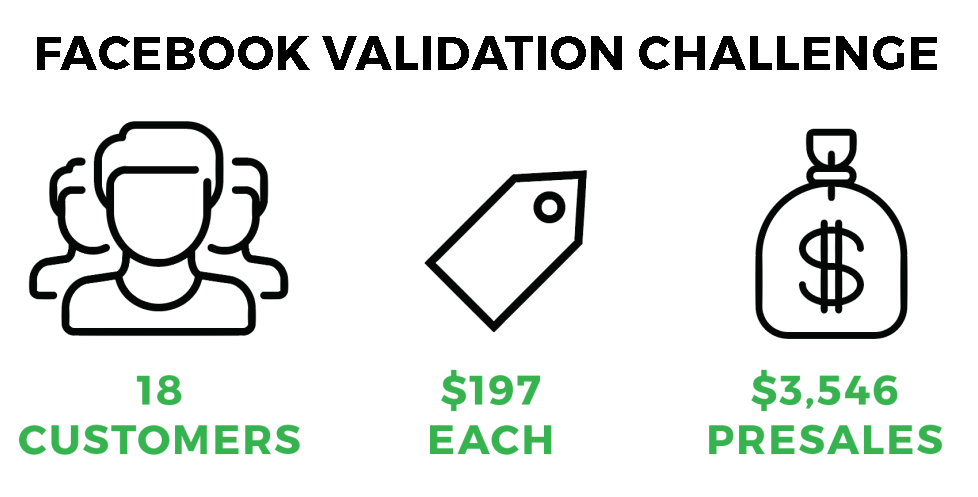
Today I’m going to show you everything I did which includes:
- Picking the product or service to validate
- The formula for writing the Facebook post copy
- How to respond to leads
- How to accept payment
Why did I choose to do the 24-hour validation on Facebook rather than creating the course first and then getting sales?
Well here’s how I pictured it:
Option 1:
I spend the next few months putting a course together and then trying to get customers.
Option 2:
I pre-sell the idea for the workshop, see if I could get some validation and only if people are willing to validate it in advance do I spend the time working on it.
I can picture it now, had I chosen option 1 I would have been gung-ho on creating content for about a few weeks a week and then the initial excitement would wear off, and I’d let it fall by the wayside because there’s no one to keep me accountable.
Whereas with option two if I presold the workshop to people that knew, liked, and trusted me if I didn’t give them something in return, well I’d be a real scumbag, right?
^^ That right there is built-in accountability.
So how does this whole zero-to-customer thing look:

Step 1: Pick the product or service you’re offering
Not sure what product to offer?
A good way to know what would be a good idea or product for you is to pick something that you have already been asked about. Look through your email or messages, what do people email or message you want to know about?
Over the past two years as I’ve launched three successful Kickstarter projects, I’ve gotten many requests from people to help them with theirs. It’s now gotten to the point where every few days I was getting emails or messages from people asking me to get on calls to help with them.
Here are just a few of the many emails and messages I’ve gotten over the year around the topic I have chosen to dig into:
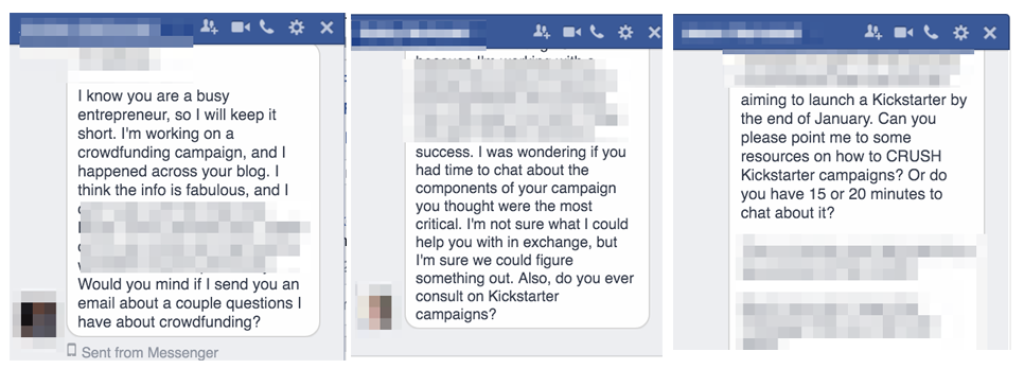
It’s one of the reasons I wrote these in-depth Kickstarter articles, so I could guide people to them if they needed help. However, there’s so much more to it than I’ve even written about which is why a course teaching everything makes sense.
Step 2: Craft the Facebook post
Like I said, I’m not validating the idea by running Facebook ads but with a post, AKA status update. This means no pictures or graphics, just some copy to explain my idea and what I’m trying to do.
It is important to structure the Facebook post in a way that grabs people’s attention, gives the necessary information about your offer, and then asks them to take action.
Here’s the structure of the post:
The Title: What Are You offering
Credibility: what experience do you have with this product/service?
Testimonial: If you’ve helped others with this, what have they said
Content: What the product will be/ service will cover
Urgency: How many presellings will you offer? What’s the deadline?
Call to Action: What Action do you want people to take?
This is how it looks in action (my actual Facebook post):
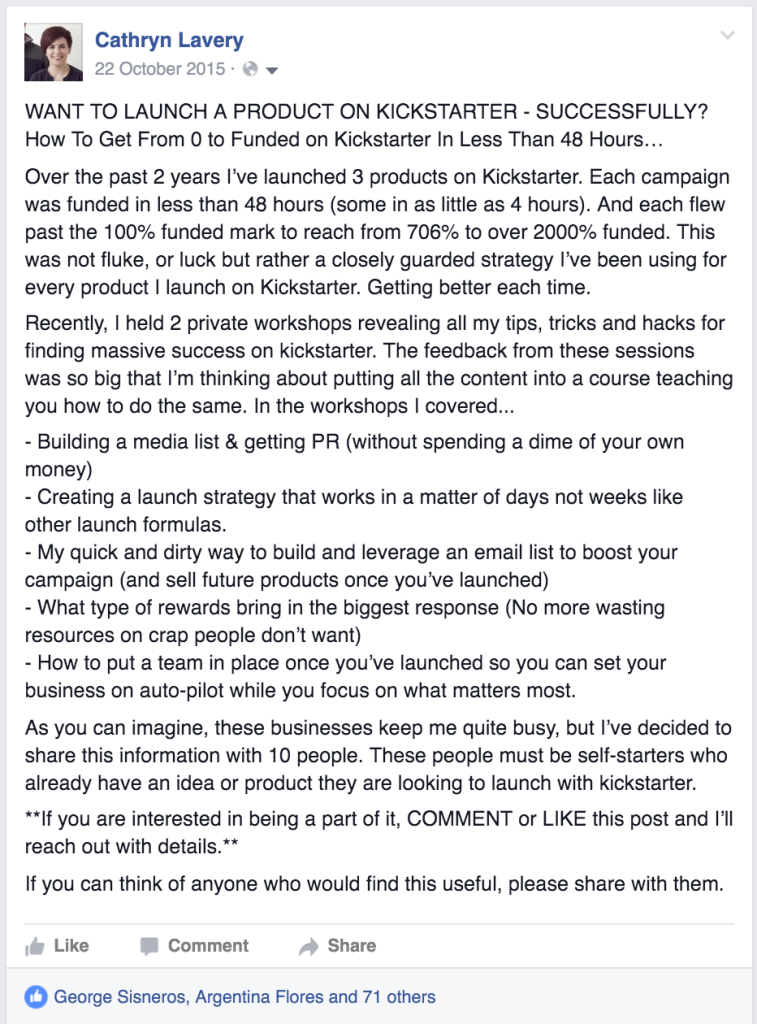
If you are part of any Facebook groups that are aligned with your message you could share in there. However, be careful not to spam.
I didn’t post in any groups myself. However, a friend did share my post in their personal group around physical products which led to a few sales.
Step 3: Respond to Leads:
Make sure you have blocked out time to respond to leads. This isn’t a time when you post on Facebook and then go out to lunch for 3 hours. You want to be available so that when anyone likes or comments you can reach out.
I like to have my script pretty much ready for when someone replies.
Essentially people want to know two things:
- What do I get?
- How much does it cost?
With the script I had, I dive into a little more detail about what it entails. I also give a guarantee if they aren’t happy, this is essentially giving them the product at no risk to them if I don’t deliver.
Step 4: Take payment and make it easy
Ensure that you have an easy way for people to send you money. I used Paypal for this as it’s quick and easy. You can even send a custom link with the prefilled information that looks like this:
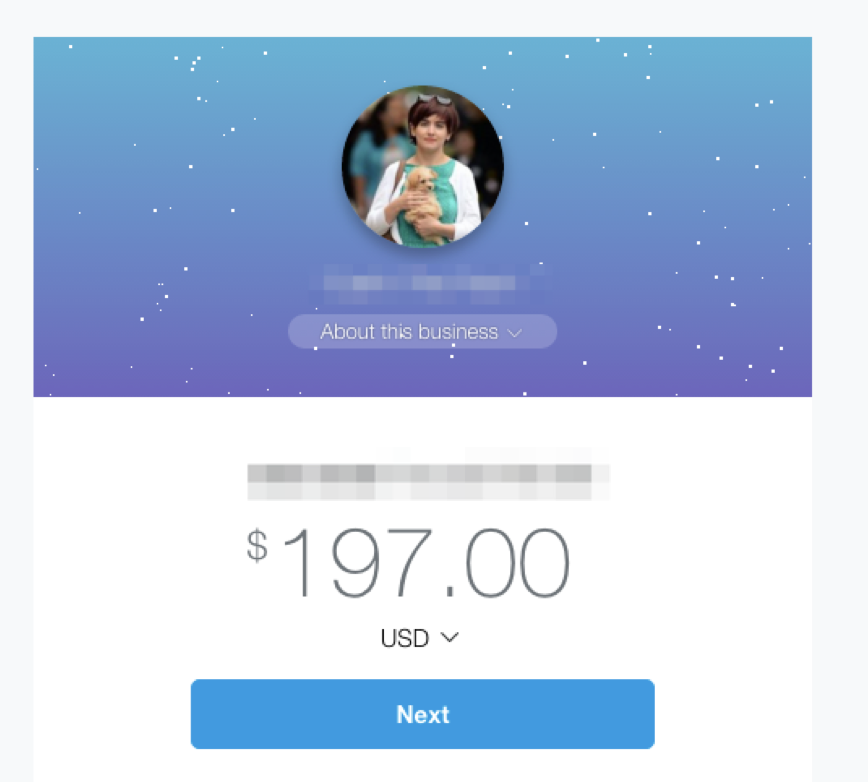
Custom pre-filled link: PayPal.me/USERNAME/AMOUNT➡️
PayPal.me/cathrynlavery/197 (feel free to send money anytime)
Other options:
Step 5: Send an intro email:
Once they’re paid, you’ll want to send an email to the people who buy in and let them know what the next steps are. The reason for this is that once that buyer high runs dry, you don’t want people confused about what happens next.
You can send this manually or through an email service.
Since I knew, I would be sending out email updates to these people I put them on my list right away. I use ConvertKit for my email service (I love it), so as I added people to my list it sent out an autoresponder to let people know what the next steps were.
… and that’s how you validate and sell an idea on Facebook before ever creating anything.
Biggest takeaways:
✔️ Money upfront is the biggest validation
✔️ Money is also huge for accountability, now you have to create something.
✔️ These presales will help you create your course by telling you exactly what they want to learn about.
Curious about what the next steps are? Join my list here to get notified on the next part which is the creation and fulfillment of the product you offered.
Become a subscriber receive the latest updates in your inbox.



